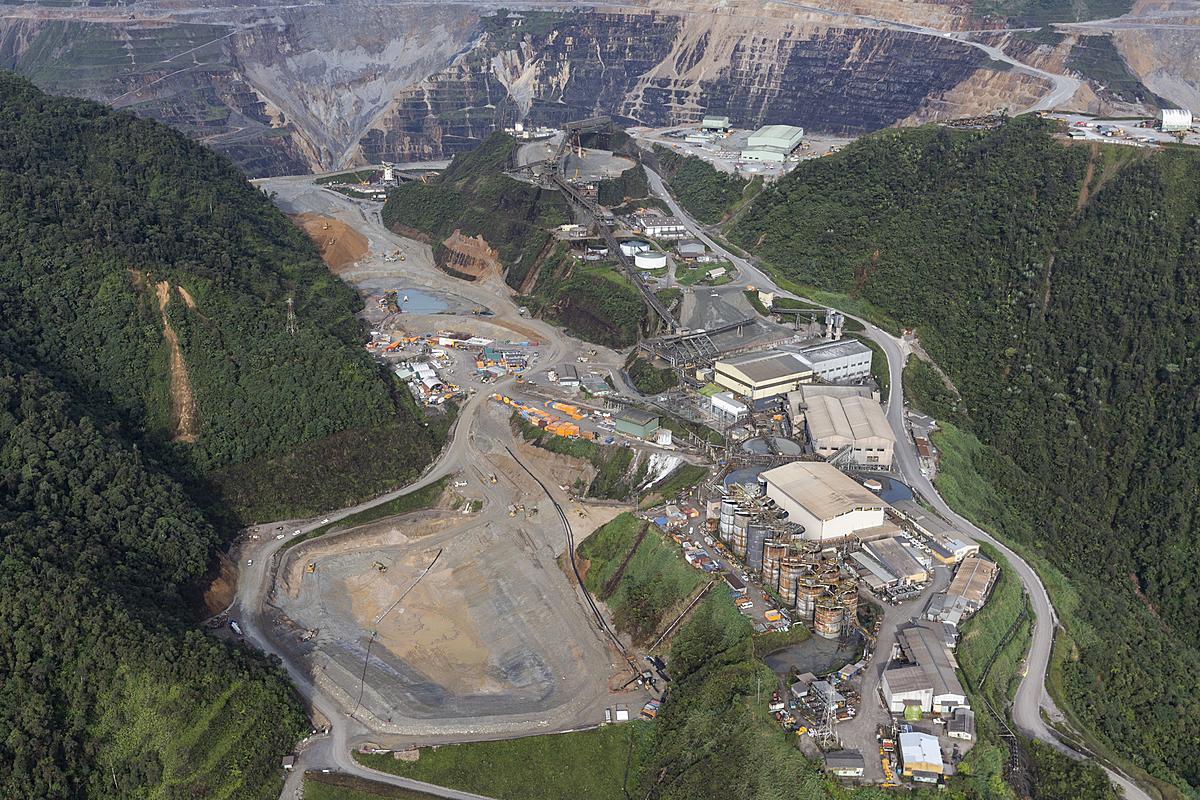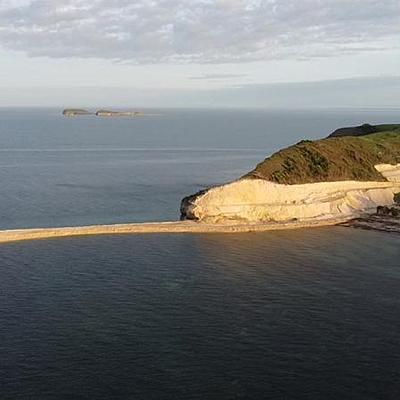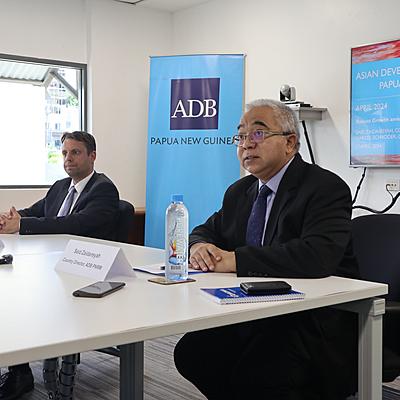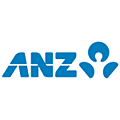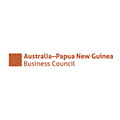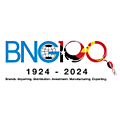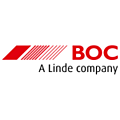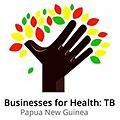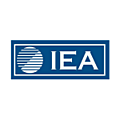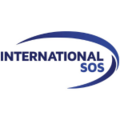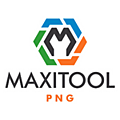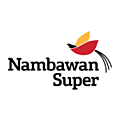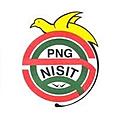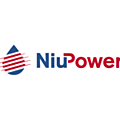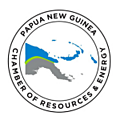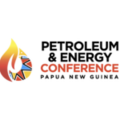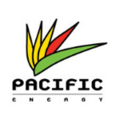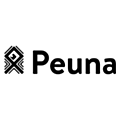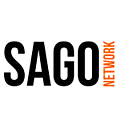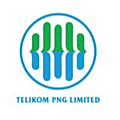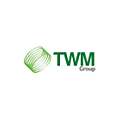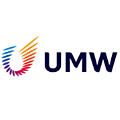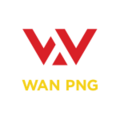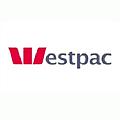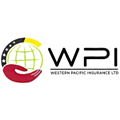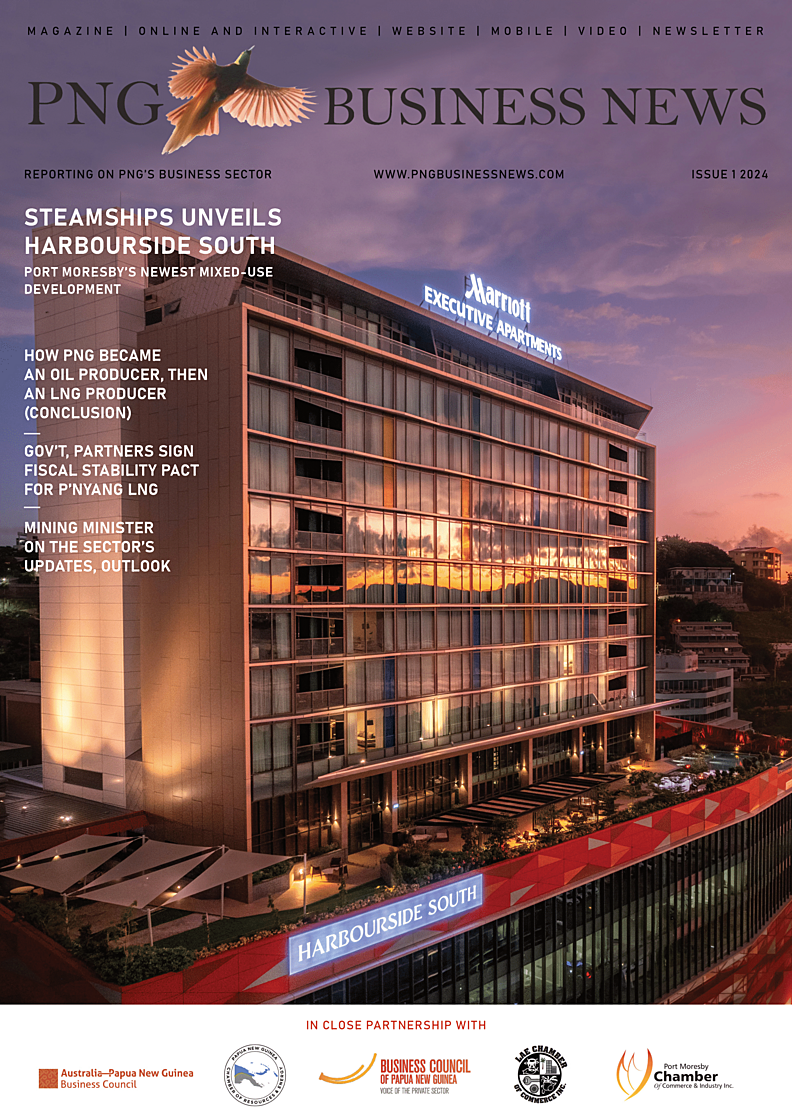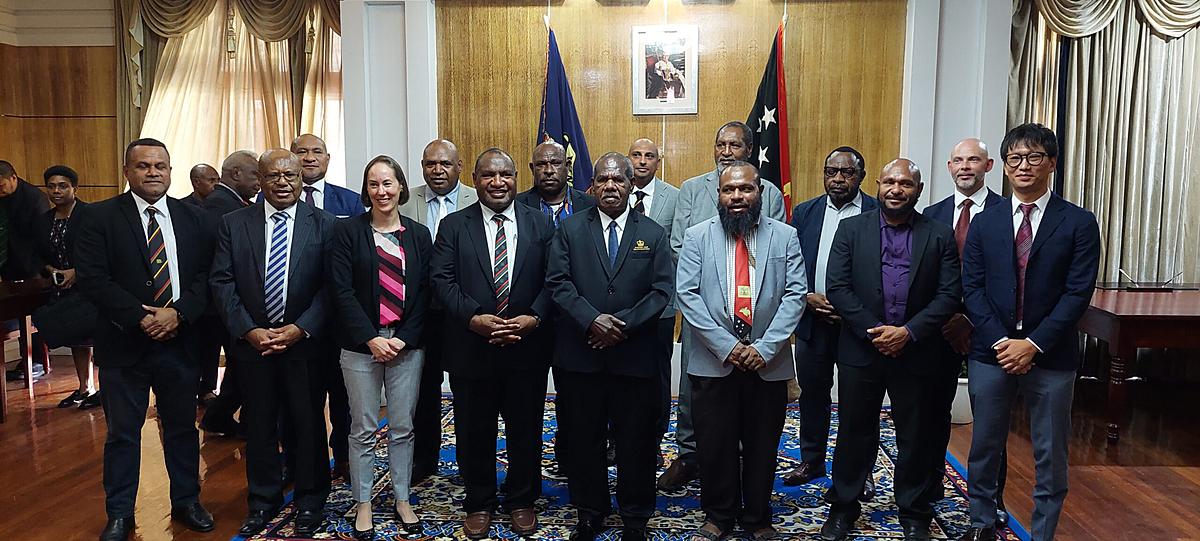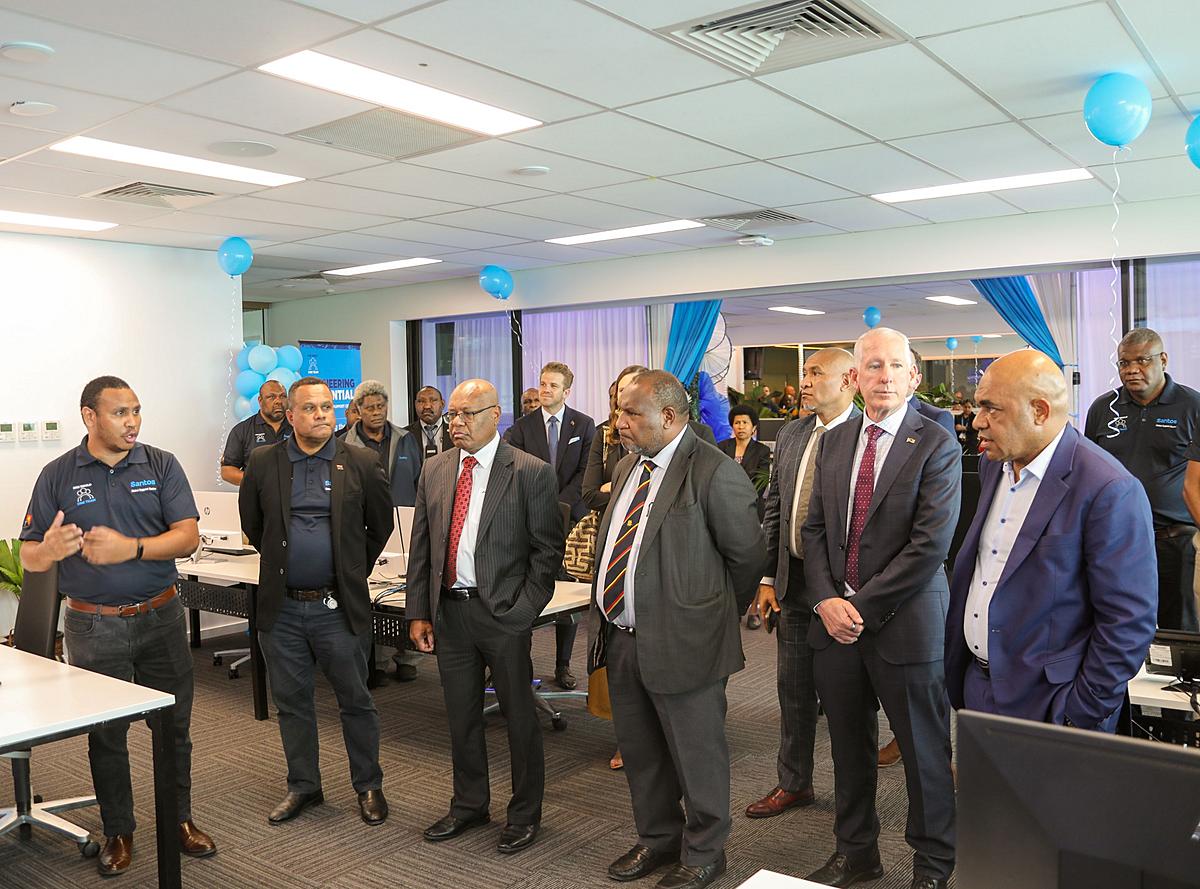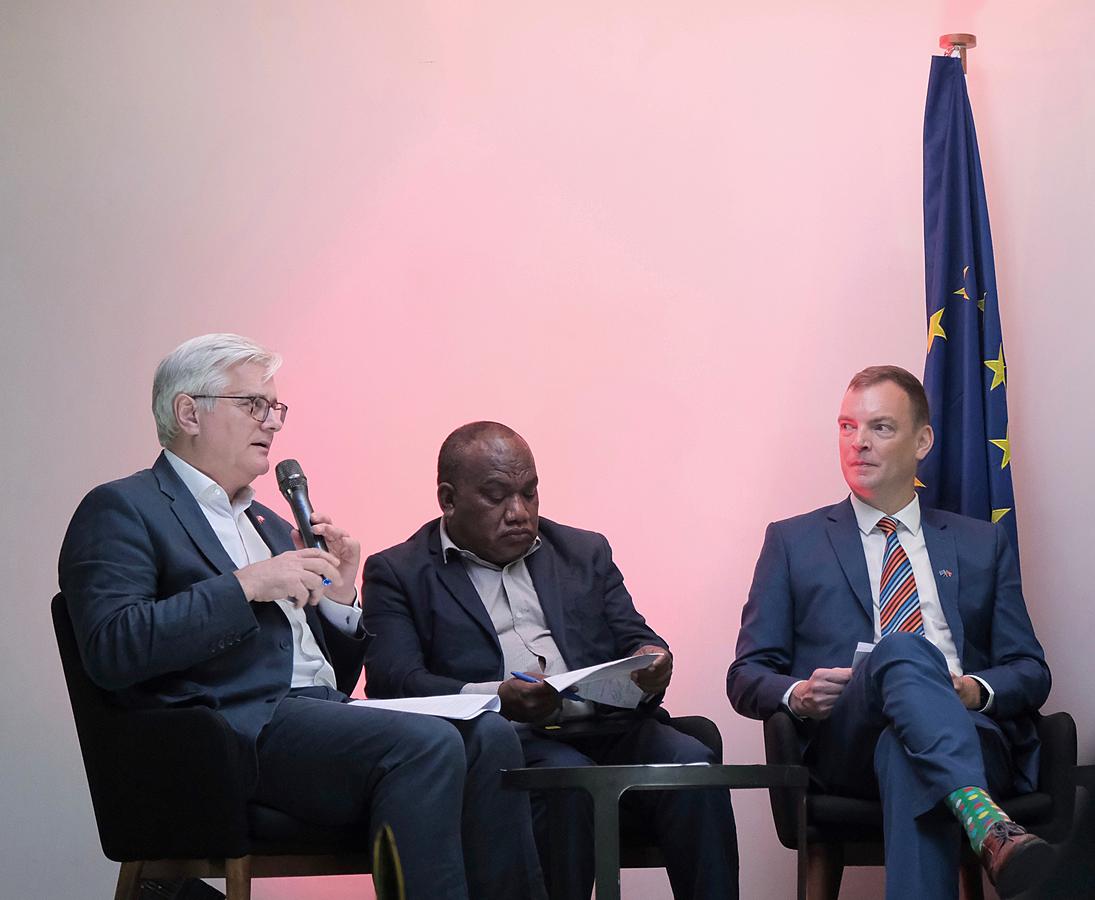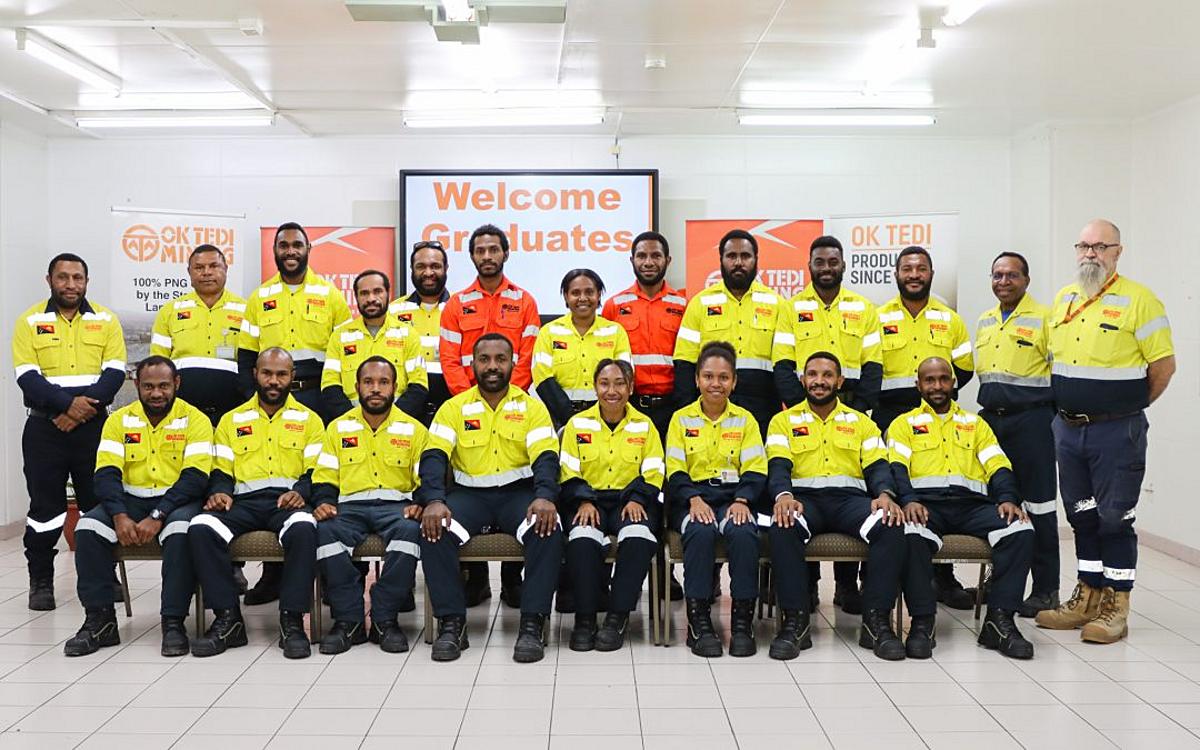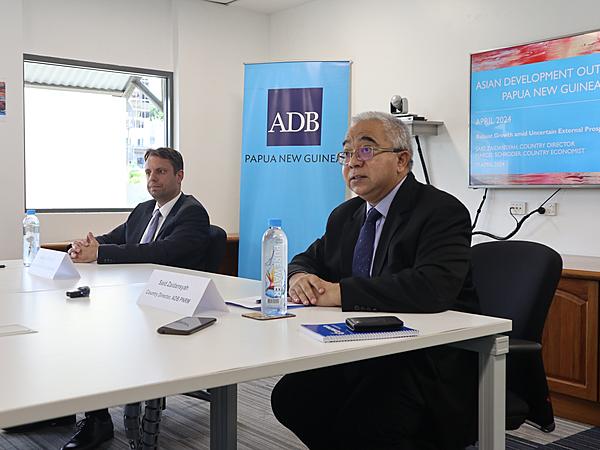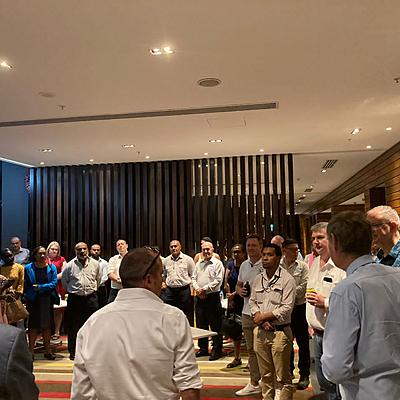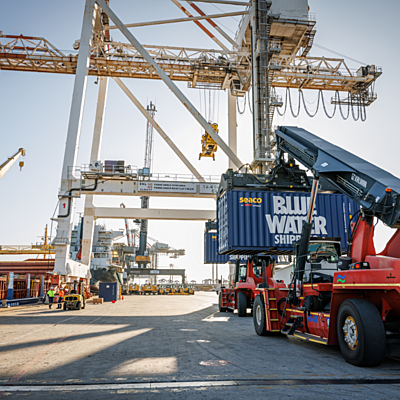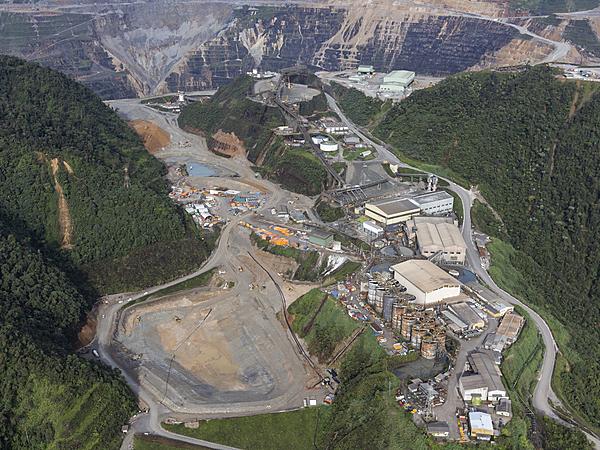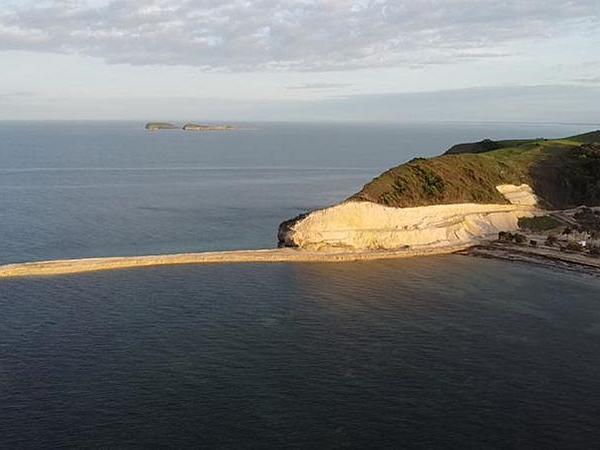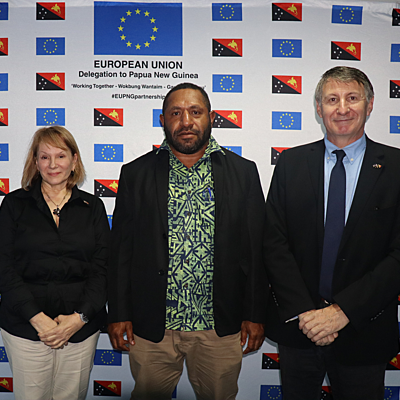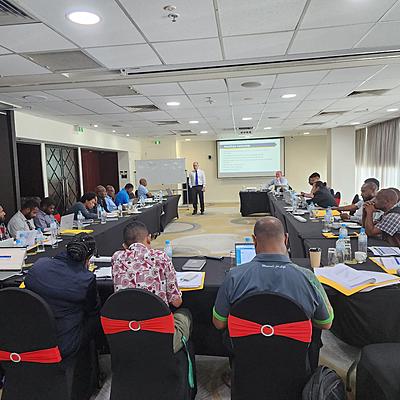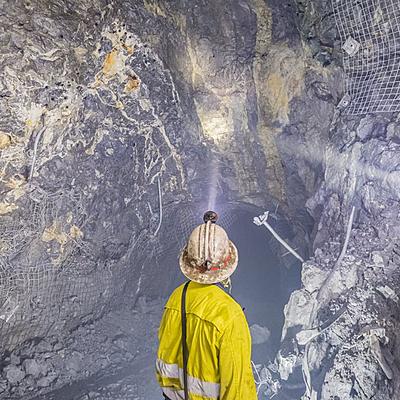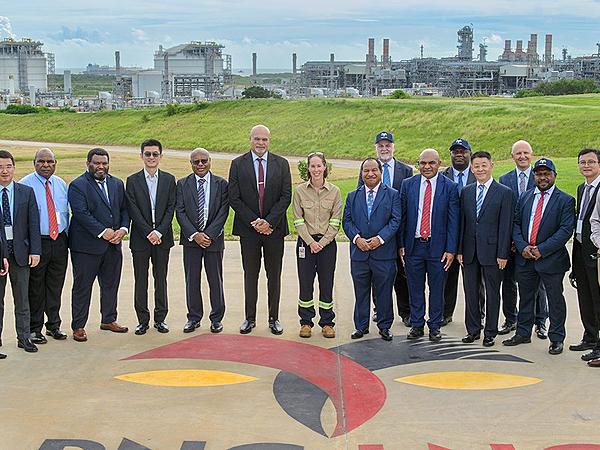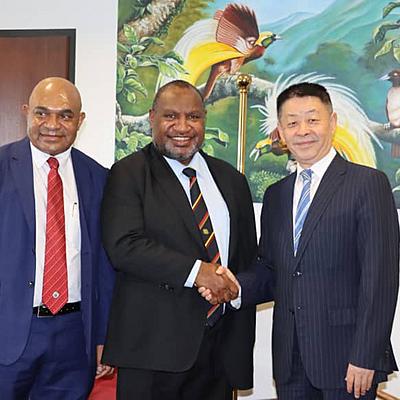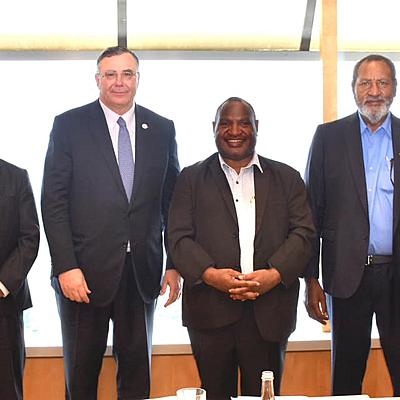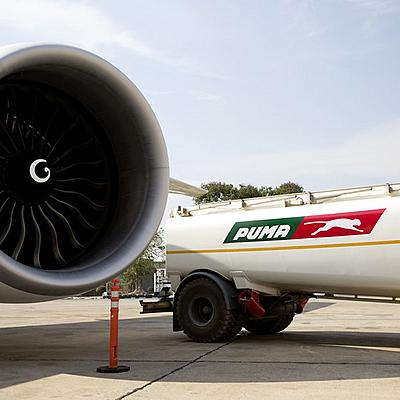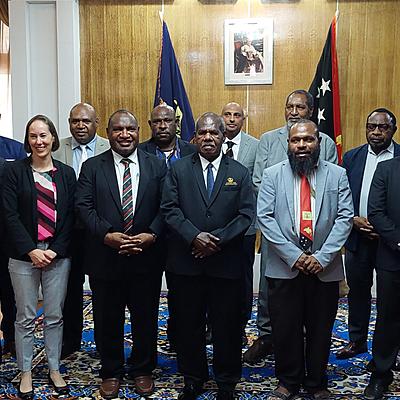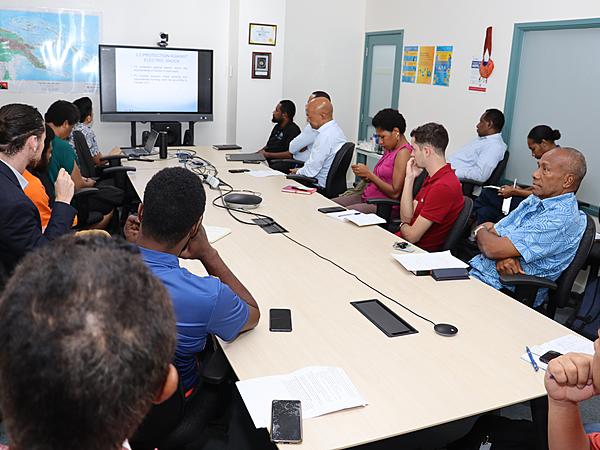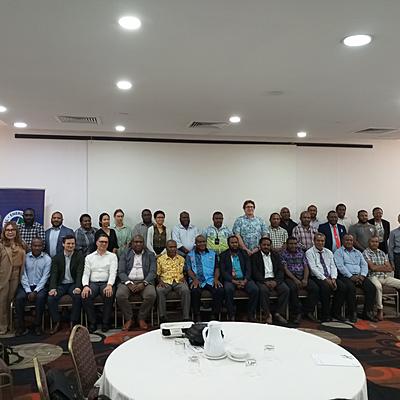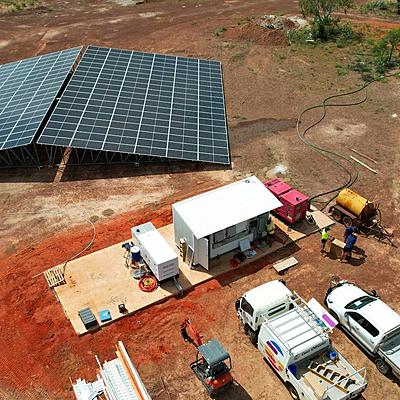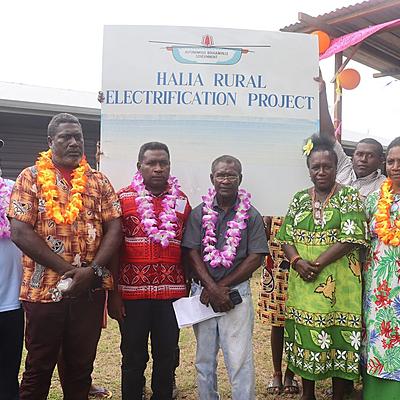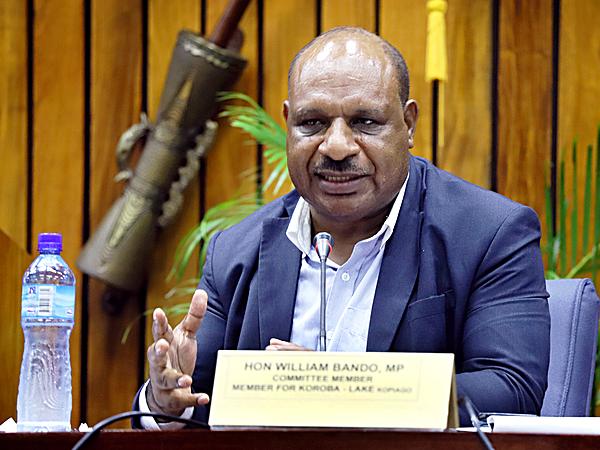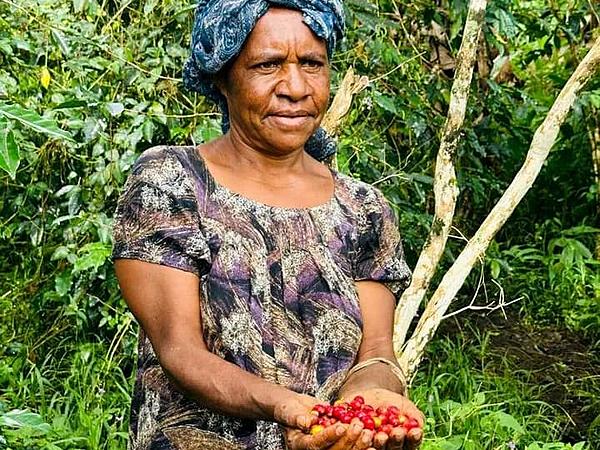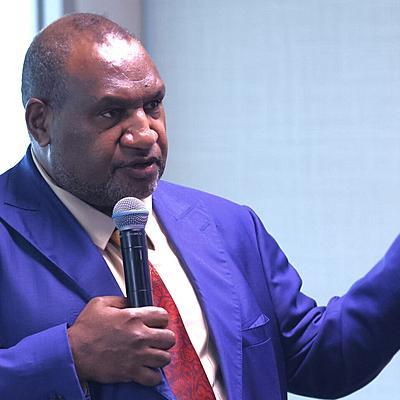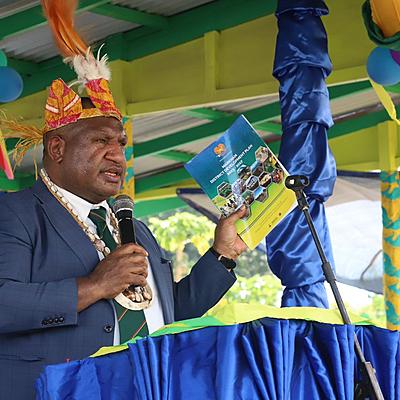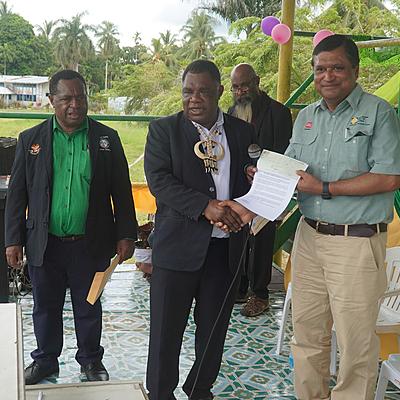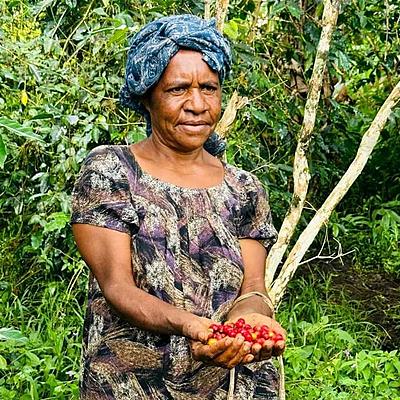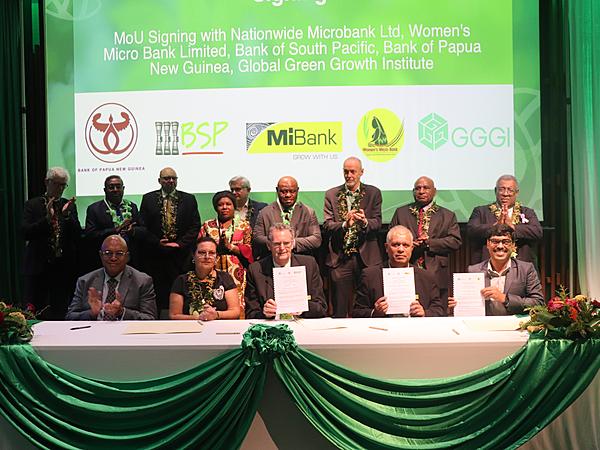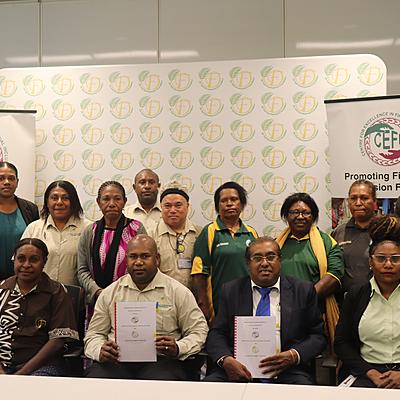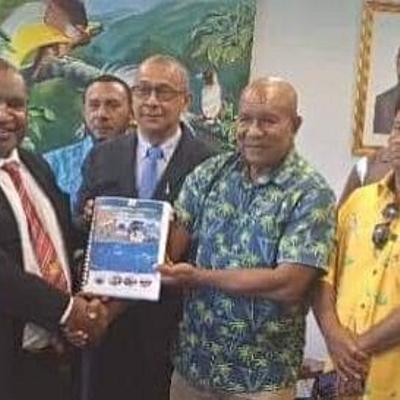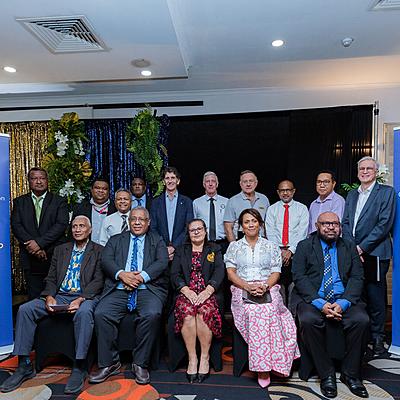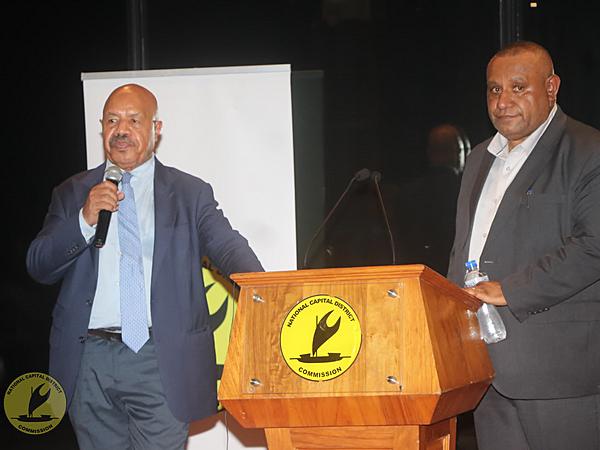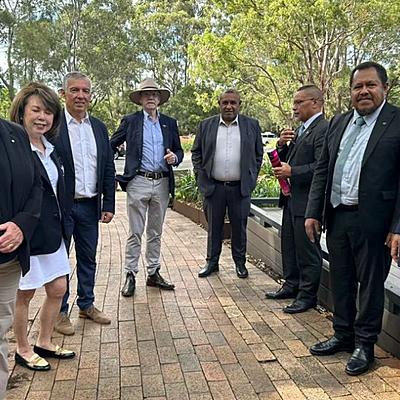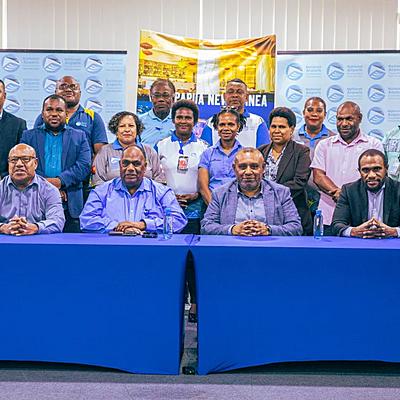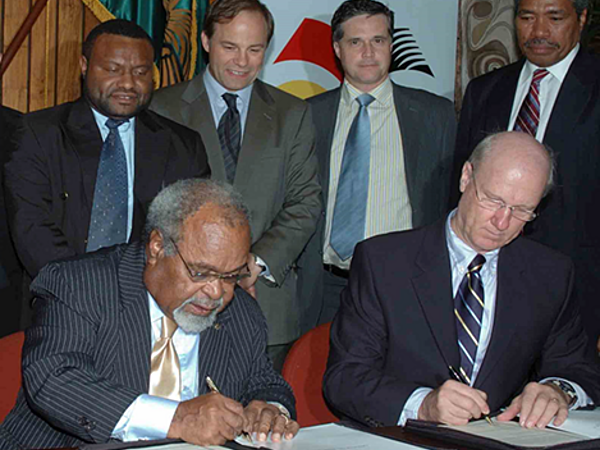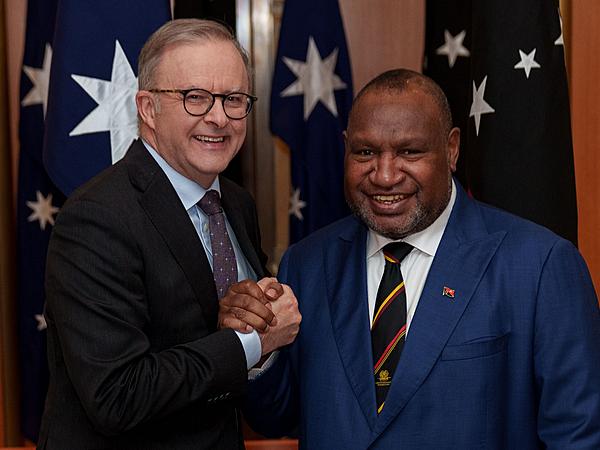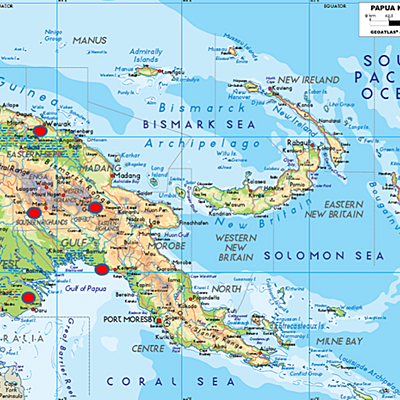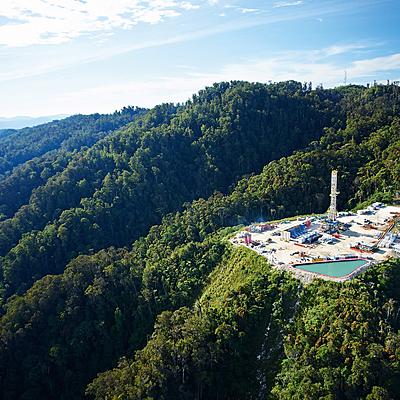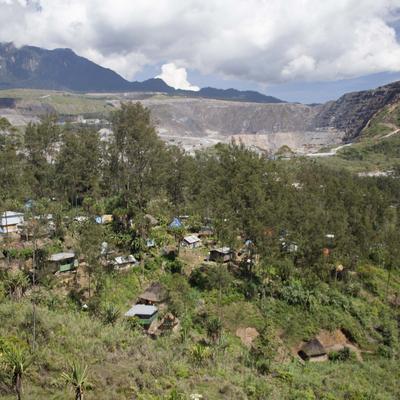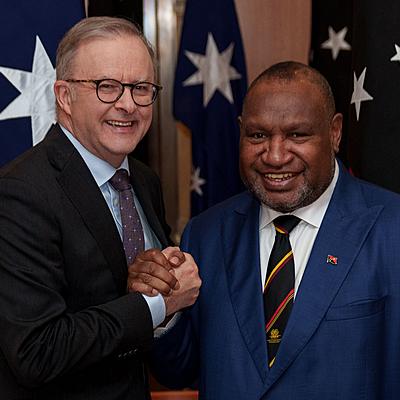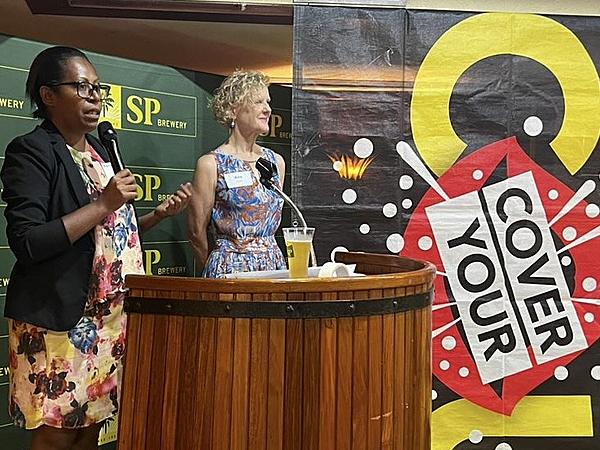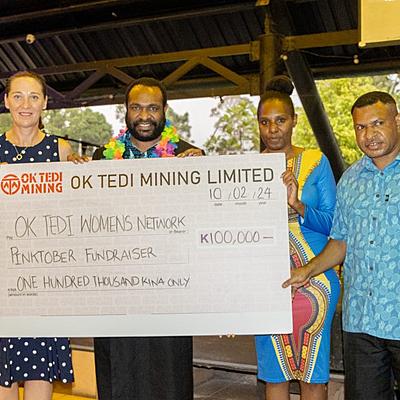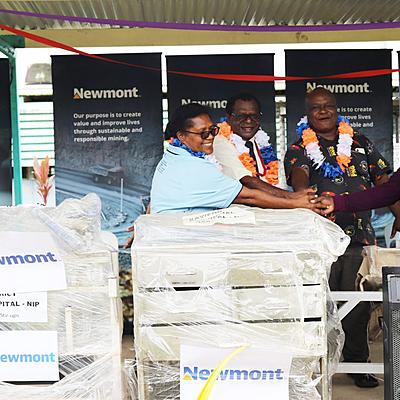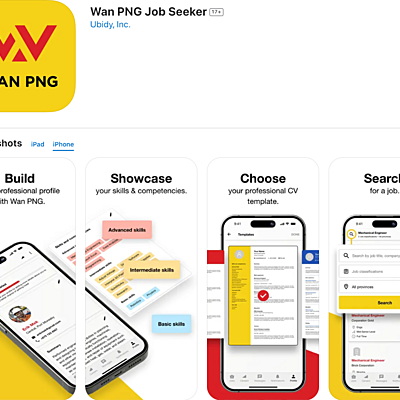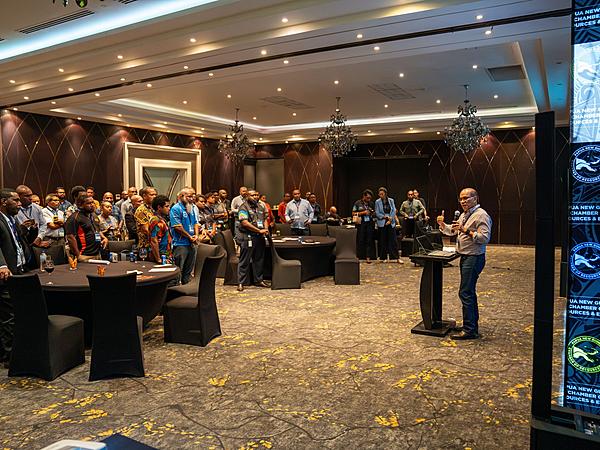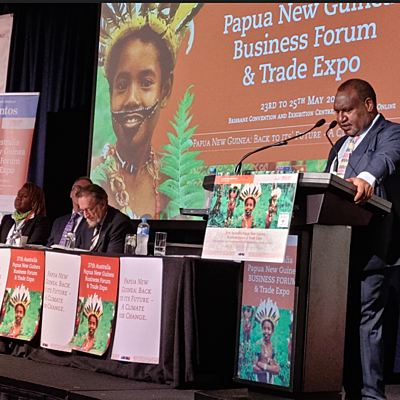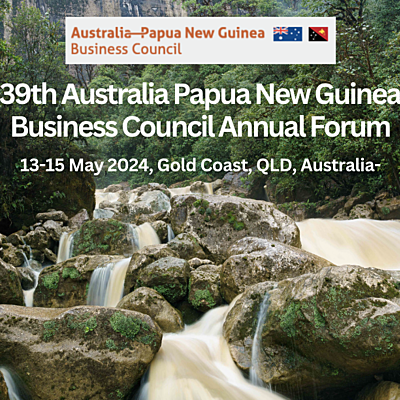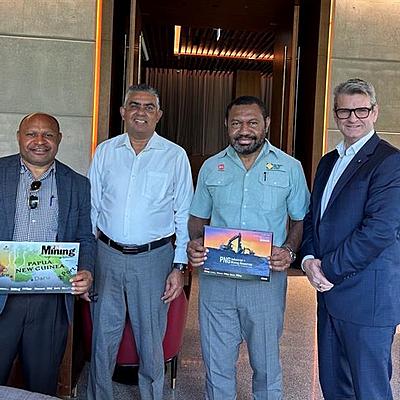Latest News
Trending News
The Asian Development Bank (ADB) reaffirmed its strong, long-term partnership with the Government of Papua New Guinea (PNG) during the wrap-up meeting of ADB’s Country Programming Mission.
At the meeting co-chaired by ADB Country Director for PNG Said Zaidansyah, Department of National Planning and Monitoring Secretary Koney Samuel, and Department of Treasury Secretary Andrew Oaeke, ADB and the Government of PNG discussed the strategic priorities for the bank’s support for the country.
“As the biggest multilateral development partner of PNG, ADB will continue to support diversified, sustained, and inclusive growth in the country,” said Mr. Zaidansyah. “ADB’s support is aligned to PNG’s Medium Term Development Plan IV, 2023−2027, taking into consideration the International Monetary Fund program’s lending limit, portfolio performance of active ADB projects, and the capacity of our executing and implementing agencies.”
ADB’s active program in PNG currently stands at $1.38 billion. The largest sectors ADB is supporting are transport (roads and civil aviation) with 60% and energy with 20% in response to the large infrastructure gap in PNG. The human and social development sector as well as building resilience to climate also form part of ADB’s active portfolio. ADB is also actively working on public sector management including state-owned enterprise reforms.
While ADB’s indicative country assistance pipeline for PNG for 2024–2027 will continue to focus on transport infrastructure, public sector management, energy, and education, it will also provide new emphasis on water, sanitation, hygiene, agriculture, and financial inclusion. The pipeline strongly supports climate change mitigation and gender equity. Planned transport, energy, and water projects aim to facilitate significant economic opportunities and access to services.
Ok Tedi Mining Limited (OTML) is proud to announce a record production result for the first quarter of 2024, with an achievement of 26,114 dry metric tonnes (dmt) of copper (Cu), marking a substantial increase of 61% compared to the same period last year which was 16,265 dmt.
This record production has been complemented with a safe start to the year with a Lost Time Injury Frequency Rate (LTIFR) of zero (0) and Total Recordable Injury Frequency Rate (TRIFR) of 0.22 compared to 2023 with LTIFR and TRIFR recorded at 0.21 and 0.63 respectively. Unlike in the past, the strong production results this time was achieved with all environmental KPIs at the Mine, Mill and Bige dredging site being fully met.
This performance is a testament to the Company’s commitment to responsibly enhancing production, implementing strategic business improvements, and optimizing operational efficiency across the entire production chain, from mine and mill to the port.
These results are driven by OTMLs ‘restore, reset, and reinvigorate' strategy, launched in 2023 to revitalize our business operations.
Importantly, the Company remains committed to fulfilling our environmental, legal, and social obligations, consistent with its vision to maintaining positive relationships with the communities impacted by our operations, and thereby securing the social license to continue to operate, which is vital for our ongoing success.
Looking ahead, with the approval for the Mine Life Extension in principle up to 2050 by the OTML Board, the Company is poised for sustainable growth well into the future.
OTML is actively pursuing strategic growth projects aligned with our current Strategic Business Plan, which are progressing successfully and anticipated to generate K30 billion in social benefits over the next 27 years, including taxes, royalties, and dividend payments.
Our record production in the first quarter of 2024 underscores our commitment to excellence, innovation, and responsible mining practices, which are pillars of our Vision 2023.
We remain focused on driving value for our stakeholders while contributing to the sustainable development of our communities and the broader PNG economy.
Kumul Petroleum Holdings Limited recently announced that for the first time it was directly marketing Liquified Natural Gas on the ‘spot’ market from its share of product from the PNG LNG Gas Project that was not committed to long term sales agreements.
Confirmed last month, the deal is to sell 144,000 m3 of LNG on FOB terms to PetroChina International Corporation Limited after a tender process held in February. The Wudang is currently at the PNG LNG Project wharf at Caution Bay being loaded.
KPHL managing director Wapu Sonk said, “Today marks a important milestone for our company, it is the first time for Kumul Petroleum to market our equity share of LNG production from the PNG LNG Project, that is above the long-term Sales Purchase Agreement volumes.”
“Kumul Petroleum has a 16.77% share in the PNG LNG Project and this entitles us to sell approximately 14 LNG cargoes over the next 4 years. Also, once we conclude the acquisition of an additional 2.6% of the PNG LNG Project, this will provide us with more LNG to sell on the spot market.”
“Kumul Petroleum direct selling its share of the PNG LNG Project production is a significant acheivement for the company and the country.” Mr. Sonk said.
“We are currently in talks with other potential buyers who will be purchasing LNG shipments from us in the future.”
In the ever-evolving development sectors of sustainable energy, mastering the installation of solar energy systems is both a skill and a necessity. With advancements and innovations occurring at a rapid pace, being informed with developments are crucial for companies in the electrical and solar industry.
The Sustainable Energy Industry Association Papua New Guinea (SEAP) recently hosted a pivotal workshop in partnership with the Sustainable Energy Industry Association of Pacific Islands (SEIAPI) and the United States Agency for International Development PNG Electrification Project (USAID-PEP).
Held on the 5th of April at the USAID-PEP office in Port Moresby, the event titled “SEIAPI/SEAP/USAID-PEP Solar Standards Workshop” brought together 60 participants from solar and electrical companies, government agencies, international donor organizations, and academia.
The USAID-PEP Chief of Party Bruce Corbet highlighted the importance of mini-grids and small-scale electrification in achieving PNG’s electrification goals.
Mr Corbet said, “This is one of the steps we are taking as more people join. And it is really important, this message, ‘that mini-grids and small-scale electrification is a fundamental part of electrifying Papua New Guinea’ and achieving the government’s goal of that 70% access target by 2030.”
He emphasized the necessity of partnerships and capacity development for such initiative.
USAID-PEP seeks to enable the creation of PNG’s mini-grid development industry. The workshop is for capacity development, including an opportunity to network with potential partners in the industry.
The workshop lasted 1 hour and 30 minutes and participants were immersed with information and knowledge, guided by a “Standards Presentation,” followed by a question-and-answer session and a few minutes of industrial networking.
The workshop, held both in person and online by Zoom, served as a platform of knowledge and collaboration, shedding light on solar energy installation.
SEIAPI Executive Officer, Geoff Stapleton, a distinguished pioneer of the Australian solar industry, led the workshop with commendable expertise and insight.
In collaboration with SEAP and USAID-PEP teams, Stapleton’s presentation delved deep into the topics such as design and product standards, solar energy standards, safety practices, and installation techniques.
The presentation focused on critical standards and guidelines regarding solar photovoltaic (PV) systems, with a specific focus on design, installation, and product standards.
Stapleton also provided a comprehensive overview of essential standards. From AS 4509.1:2009 to AS/NZS 4777.1:2016, each standard was explained with a visual guide, emphasizing its significance and implications for solar designers and installers.
Stapleton’s pivotal role in the development and refinement of solar industry standards was evident, showcasing his expertise and commitment to ensuring installation practices and safety measures are carried out during installation based on both specification and requirements.
The workshop's agenda covered a broad spectrum of topics, ranging from stand-alone power systems to grid connection requirements.
Attendees also participated in the presentation by discussion, which they gained insights into system designed complexity, safety requirements for PV (photovoltaic) arrays or solar arrays, and electrical installations involving battery systems.
Moreover, the presentation highlighted the inter-relation between various standards, emphasizing their collective role in ensuring the safety and effectiveness of solar energy systems.
One of the workshop's key takeaways was the importance of compliance with industry standards. With safety being a paramount concern, adherence to standards such as AS/NZS 5033:2021 and AS/NZS 5139:2019 is imperative for companies operating in the electrical and solar industry.
In addition, the workshop underscored the critical role of training and recognition schemes in fostering a culture of excellence and professionalism within the industry, especially in an industry where precision and compliance are paramount.
The recent signing of the Protocol on coffee exports to China during the official visit of His Excellency Wang Yi, the Minister for Foreign Affairs for China, marks a significant milestone for Papua New Guinea's coffee industry and agriculture sector.
The momentous occasion on the 21st of April signifies an historic moment in the relationship between PNG and the People's Republic of China, as the phytosanitary protocols were signed to open the Chinese market to PNG's unroasted coffee beans.
It reflects years of negotiation efforts by PNG Prime Minister Hon. James Marape and Minister for Foreign Affairs, Hon. Justin Tkatchencko, aimed at bridging the gap between the two nations' systems.
Traditionally, PNG's coffee has been primarily traded with Western societies, with Asia serving as the shipment port.
However, with the efforts from Prime Minister Marape to promote and develop the agriculture sector, the Memorandum of Understanding (MOU) with China heralds a promising future of trade and economic partnership between the two nations.
PNG boasts a global reputation for its distinct coffee, with exports reaching over 34 countries worldwide.
Despite producing less than 1 million green bean bags annually, PNG’s presence in various markets underscores the unique position its coffee holds among enthusiasts globally.
PNG Minister for Coffee, Hon. William Bando, CPA, LM, MP, in a recent statement, assured his Ministry’s commitment in supporting the coffee industry.
“My Ministry will work to enhance the entire coffee value chain, from farm to cup, by investing in infrastructure, technology, and capacity-building initiatives that improve productivity, quality, and market access for coffee farmers,” Hon. Bando said.
From 2021 to 2023, PNG has witnessed remarkable growth in its coffee export sector, particularly in exporting to China. The cumulative value of coffee exported saw over 50,651 bags (3,039 tonnes) shipped to China, bringing in an impressive K42,104,493 -- reflecting the dedication of local farmers and exporters.
“This achievement is a testament to the hard work of our local farmers and exporters, where 58% out of the 32 registered exporters have ventured into the Chinese market, diversifying and expanding their horizons,” Minister Bando said.
The surge in exports to China, reaching 35,020 bags (2,101 tonnes) in 2023 alone, demonstrates the increasing demand for PNG coffee in China, attributed to the unique taste and high quality of PNG coffee, making it a preferred choice among the Chinese.
Minister Bando confirmed that the figures presented relates to PNG coffee entering China, not directly but through different ports such as Hong Kong, Malaysia, or Singapore, as PNG had no protocols for direct entry of coffee. It will be another chapter when coffee can be now shipped direct to China.
He stated the challenges the PNG coffee industry faces, adding: “The signing opens up market for our products, but it is a challenge to our coffee industry to produce more as direct exports will obviously mean more direct sourcing of PNG Coffee.”
“Further, we can expand our roast and ground coffee trade with the direct flights between PNG and China that is expected to be three flights weekly. We need to put more roast beans and ground coffee on these flights to China apart from the unroasted or green bean exports on ships.”
He said efforts will be directed towards enhancing the entire coffee value chain, from farm to cup, through investment in infrastructure, technology, and capacity-building initiatives. Research and innovation will play a crucial role in driving growth and competitiveness in the coffee sector, the minister added.
PNG also seeks to explore trading opportunities with China for other commodities such as cocoa, rubber, coconut, copra, tea, and oil palm, emphasizing the commitment to agricultural development.
However, the minister said the success of this agreement hinges on the continued dedication of farmers, growers, and industry stakeholders to increase production and productivity while maintaining the unique taste and preferences that distinguish Papua New Guinea coffee on the global stage.
Hon. Bando added: “My appeal to all Coffee Industry Corporation Board and staff and Agriculture Officers throughout PNG to get moving on the ground to motivate, encourage and point our producers to getting our hands dirty and this will create employment and income earning opportunities and in moving our industry forward as well as our economy. We must produce more coffee and process at affordable costs for our own consumption and to sell to the world that unique PNG brand.”
Papua New Guinea took a significant stride towards sustainable economic development with the inauguration of the Green Finance Centre (GFC) in a collaborative effort spearheaded by the Bank of Papua New Guinea (BPNG) and the Global Green Growth Institute (GGGI).
The move aims to revolutionize PNG's financial sector by integrating green finance principles into its core operations.
Other key partners include the Centre for Excellence in Financial Inclusion (CEFI), the Department of Climate Change and Development Authority (CCDA), and the Alliance for Financial Inclusion (AFI).
The effort’s primary objective is to tackle environmental and climate change challenges in PNG through innovative and inclusive climate finance and green investment mechanisms within the financial and banking sector. This aligns with PNG’s commitment to achieving low-carbon, sustainable, and inclusive economic growth while addressing climate change risks across the country.
This landmark collaboration launched on 25th March at the prestigious Hilton Hotel, Port Moresby. Distinguished guests included Chief Secretary to the Government of PNG Mr. Ivan Pomaleu OBE, Conservation Environment & Climate Change Minister Hon Simo Kilepa MP, and the Governor of the Bank of Papua New Guinea Mrs. Elizabeth Genia, marked a pivotal moment in the nation's financial landscape.
The ceremony also witnessed the participation of key dignitaries, including the Minister for the Environment Hon. Simon Kilepa; Dr. Alfred Hannig, Executive Director for Alliance for Financial Inclusion (AFI); New Zealand High Commissioner, Peter Zwart; His Excellency Guillaume Lemoine, French Ambassador to PNG; and Mr. George Awap, Assistant Governor - BPNG.
At the heart of the initiative lies the Inclusive Green Finance Policy (IGFP), developed by GGGI and CEFI in 2021. With a generous funding of USD 670,000 from the New Zealand Ministry of Foreign Affairs and Trade (MFAT), under the Low Emission Climate Resilient Development Program (LECRD), the IGFP aims to integrate green finance practices into PNG’s financial landscape.
One of the highlights of the launch was the unveiling of the GFC's logo and website, symbolizing a new era of environmentally conscious and financial practices in PNG. The steering committee, chaired by BPNG, will guide the GFC in implementing the IGFP and leading future initiatives related to green finance flows in the country.
The signing of a Memorandum of Understanding (MoU) among BPNG, GGGI, and three financial institutions—Bank of South Pacific Group (BSP Group), Nationwide Micro Bank (MiBank), and Women’s Micro Bank (Mama Bank)—underlines the commitment to integrating the IGFP into their operations and development of green loan products.
The grant agreement signed between GGGI and Agence Française de Développement (AFD) further solidifies international support for PNG's green finance agenda. With a six million Euros grant, PNG through the GFC will receive one million Euros to support the ongoing work of IGFP implementation and an additional 1.8 million Euros for designing and capitalizing of a Green Refinancing Facility (GRF).
In his keynote remarks, Chief Secretary Mr. Ivan Pomaleu OBE hailed the establishment of the GFC as a bold step towards greening PNG's financial sector, emphasizing the importance of promoting low-emission options to combat climate change impacts.
“In line with the government’s mandate, the Green Finance Centre will strongly advocate for banks to channel loan investments in sectors such as agriculture, energy, SMEs and bioeconomy to promote low-emission options to reduce our carbon footprint and lead by example in the region and globally, demonstrating our commitment to addressing climate change impacts,” said Mr. Pomaleu.
Echoing similar sentiment, BPNG Governor Mrs. Elizabeth Genia reaffirmed the bank's commitment to promoting national financial inclusion and environmental sustainability, acknowledging the pivotal role of GGGI and CEFI in driving this initiative forward.
“The Bank of Papua New Guinea is committed to promoting national financial inclusion and the greening of the financial sector and the launch of the Green Finance Center underscores the commitment of all stakeholders involved to drive sustainable development and address climate change challenges through innovative financial mechanisms,” she added.
High Commissioner Zwart stressed the urgency of climate action and commended the collaboration between the New Zealand Government, BPNG and GGGI in establishing the Green Finance Center.
He said: “The New Zealand Ministry of Foreign Affairs and Trade is proud to provide funding for IGFP and collaborate with the Bank of Papua New Guinea and GGGI in establishing the Green Finance Centre which will play a crucial role in working with financial institutions to mobilize increased green lending and investments in Papua New Guinea.”
AFD Executive Director Mr. Philippe Orliange expressed support for the IGFP and the Green Finance Center, affirming AFD's commitment to replicating the success of greening PNG’s financial sector across the Pacific Region.
“Greening the financial system in PNG is crucial towards the fight against climate change and I am proud that France is happy to help PNG tackle this. PNG is a role model in the Pacific, and we wish all the best to the team involved,” he added.
The launch of the GFC aligns seamlessly with BPNG - CEFI’s Third National Financial Inclusion Strategy (NFIS 3) (2023-2027) and PNG’s climatic goals outlined in PNG Vision 2050 and Medium-Term Development Plan IV (2023-2027), highlighting the integrated approach towards sustainable development.
Port Moresby, the dynamic capital of Papua New Guinea, is set for a remarkable transformation into a premier destination for Chinese tourists, following a milestone collaboration between local and national tourism industries, business sectors, and a strategic partnership with Guangdong Province.
Together, they envision “Amazing Port Moresby” as a pivotal hub for tourism and business, fostering sustainable growth and global connectivity, National Capital District (NCD) Governor, Honorable Powes Parkop, said during a recent pre-cocktail reception at the APEC House in Port Moresby.
This event, hosted by Governor Parkop and the PNG Tourism Promotion Authority (TPA) on April 17, served to guide stakeholders toward a brighter future for tourism in the city. It also set the stage for the upcoming "China Ready Workshop," scheduled for April 25, at the APEC House from 8 am to 5 pm.
The pre-cocktail reception provided industry stakeholders a chance to engage in discussions vital to the future of tourism in Port Moresby. It aimed to facilitate networking and dialogue among stakeholders from various sectors of the tourism industry and business sector.
Attendees had the chance to connect with key players and exchange insights on strategies to prepare Port Moresby for the rapidly growing Chinese tourism market.
In his speech, Governor Parkop said: “Today’s pre-cocktail reception underscores our commitment to ensuring that Port Moresby is ready to welcome Chinese travelers with open arms.”
“The China Ready Workshop represents a crucial step in our journey to prepare Port Moresby for the burgeoning Chinese tourism market. This initiative underscores our commitment to fostering economic prosperity and forging enduring partnerships for the benefit of our city and our people,” he added.
Governor Parkop emphasized that the event, attended by various stakeholders, demonstrates a commitment to fostering relationships with the Chinese tourism market.
“The China Ready Workshop represents a pivotal milestone in our endeavor to ready Port Moresby for the burgeoning China tourism market. This initiative underscores our commitment to nurturing economic prosperity and forging enduring partnerships for the benefit of our people,” he said.
Governor Parkop highlighted that NCDC and PNGTPA have been actively driving the China Ready project, recognizing its significant potential.
He affirmed NCDC's commitment to becoming China Ready by supporting its tourism office and allocating funds from this year's budget to support its tourism initiatives.
The NCD Governor emphasized that PNG boasts numerous tourist attractions, including diverse tribes, music, and traditions, making it a compelling destination compared to other Pacific Island nations and other countries.
“We are very grateful for this partnership. And the National Government I believe, is supporting seriously. PNG, we are a great tourist destination. PNG is a great idea for a tourist destination -- from the mountains to the coast, to the islands, to the rivers. And for us here in Port Moresby, thousands of tribes and villages in one destination, and this is what Port Moresby can offer.”
“We have the potential to attract tourists from all corners, but it hinges on everyone in Port Moresby and the country. Preparedness is key; if we demonstrate readiness and preparation, tourists will come,” Governor Parkop remarked.
Mr. Eric Mossman Uvovo, Chief Executive Officer of the PNGTPA, echoed Governor Parkop's sentiments, stressing the workshop's importance and calling upon stakeholders to unite in their quest to create an extraordinary future for tourism in Port Moresby.
Mr Uvovo stated: “The workshop marks a crucial juncture in our efforts to tap into the vast potential of the Chinese tourism market. Through informative sessions and interactive discussions, stakeholders will gain valuable insights into preparing and promoting Port Moresby as a top destination.”
“Let us join forces to pave the way for an extraordinary future for tourism in Port Moresby,” he added.
The China Ready Workshop
The China Ready Workshop is an initiative spearheaded by the NCD Governor and PNG TPA since July 2023 and aims to position Port Moresby as a premier destination for Chinese tourists.
Through a comprehensive approach encompassing cultural enrichment, infrastructure enhancement, and targeted promotional campaigns, efforts are being made to elevate Port Moresby as the Chinese travelers’ choice.
The workshop will delve into key topics such as market updates, post-COVID-19 traveler insights, and effective strategies for attracting Chinese tourists and businesses to Port Moresby.
Certified participants will not only gain a Certificate of Completion but also an identification number for 12 months of continuing education. These preparations are instrumental in realizing the vision of making Amazing Port Moresby a premier tourist destination, particularly for Chinese visitors.
In Part I, we read about the signs of oil and gas throughout Papua New Guinea that enticed many oilmen to look for large oil and gas fields over many decades, and we read about the first commercial oil discovery at the Iagifu 2-X well and how the Kutubu field was successfully developed. We now pick up the story where subsequent exploration wells found mainly gas fields rather than oil fields.
When Papua New Guinea realised that its petroleum endowment was not so full of oil, but was comprised substantially of natural gas resources, it was recognised that gas would be difficult to develop in the absence of any domestic gas demand from households, commerce, or industry, and all the more so being remote from the gas markets of other nations.
So, in 1992, the Government through the newly-established Petroleum Branch, commissioned a study on all the discovered oil and gas fields of Papua New Guinea. This work was conducted by the US firm, Scientific Software Intercom in collaboration with the officers of the Petroleum Branch and sought to assess the extent of the petroleum resources and reserves to proper and systematic standards of reserve reporting then published by the Society of Petroleum Engineers.
Based on summations of the reserves, an economic study was undertaken applying the then prevailing Papua New Guinea petroleum fiscal regime. The results were presented to the National Executive Council (the Cabinet) showing that if the production from the gas fields discovered to date were aggregated, there could conceivably be a commercially viable gas development based on the export of Liquefied Natural Gas (LNG) to East Asian markets, but more work would be needed to obtain better quantification of the gas field development costs and the construction costs of a LNG plant and export facilities.
The Government liked the idea of gas development and embarked on examining its policies for such and began fostering the notion of gas development. Economic and policy studies were conducted and extensive discussions between gas field owners and promoters ensued.
In 1995, the Government tabled a White Paper on Natural Gas Policy before the Papua New Guinea Parliament. The policy laid down the regulatory and fiscal terms that the Government was willing to consider for the encouragement of investment in gas development. Key features were the introduction of Petroleum Retention Licences (PRLs) to allow the companies to keep their discoveries beyond the period of tenure provided by a normal Petroleum Prospecting Licence. This would be allowed in consideration of an acceptable programme of gas field appraisal and delineation, conduct of commercial studies and development promotion by the licensees. So long as a field was currently not commercially viable, the PRLs would allow retention for up to 15 years.
The gas policy also introduced a single ring-fence for the field development, gas pipeline infrastructure, LNG Plant and marine facilities. And based on considerable economic modelling, the Government landed on a concept of 50/50 sharing of the net value between the developer and the Government. The income tax rate for gas operations was set to 30% of net profits and the State decided it would keep its right to take up to 22.5% equity in the entirety of any development, including the LNG plant and associated facilities. Royalty rates were left at 2% of the wellhead value.
With the foundations for the gas development defined by the revised gas regulatory and fiscal regime, Exxon and BP pursued their LNG development plans based on the large Hides gas field with notions of taking the gas to the Papua New Guinea north-coast and a deep water plant site at Madang. However, these plans faltered due to the Asian financial crisis in 1997 and the consequent sudden reduction in East Asian LNG demand and the terrible tsunami that occurred in 1998 at Aitape on the north coast. An account of the tsunami was made by Prof. Hugh Davies of the University of Papua New Guinea in his book Aitape Story published in 2007. He attributed the devastating waves to movement on a sea floor fissure arising from a 7.0 magnitude earthquake. That movement caused a slump of seabed bottom sediment which would have generated the wave.
The tsunami demonstrated that whilst placing any LNG facilities nearer to markets, any north coast-located LNG facility would have to be built to much more exacting standards to cater for the additional seismic risk, as compared to the south coast. The Petroleum Division, mindful of the seismic hazards of the New Guinea part of Papua New Guinea, had earlier commissioned a Papua New Guinea Seismic Hazard Study, prepared by Dr Horst Letz, a renowned seismologist, which was completed around the time of the tsunami. It clearly defined the risk and indicated that a southern coast location for a LNG plant and facilities would be preferable.
The story of the tragic Aitape tsunami and its aftermath are told by Prof Hugh Davies in his 2007 book: the Aitape Story.
When the amendments to the Petroleum Act were being prepared for gas development pursuant to the 1995 Gas Policy, the results of policy studies on landowner benefits (both royalty and equity sharing), strategic access to pipelines and processing facilities and elementary domestic gas business provisions became available, and an effort was made to incorporate these matters into the amendments.
The Government was intent in providing statutorily defined benefits to communities hosting any future oil and gas development together with a proper process of consultation and liaison with communities. For such benefits, the Government devised the idea of a separate Development Agreement between the community parties and the State, which would be agreed in a formally convened Development Forum after proper research had been made as to land matters through the conduct of social mapping and landowner identification studies carried out by the licensees.
Significant and specific political lobbying arose from the Southern Highlands Province (home to the major oil and gas fields) for the Government to consider making a separate Gas Act for gas operations. In the resulting compromise, the Government agreed at the political level to introduce some of the reforms suggested by the Province, but only if the Act would remain intact, though it was now agreed that the new Act would be rebranded as the Oil and Gas Act, whilst still referring to petroleum for the most part.
Thus, the Oil and Gas Act, No 49 of 1998 was born. It represented a major restatement of the former Petroleum Act, covered much new ground and paved the way for improved participation by communities and their sharing in benefits.
The cover of the Oil and Gas Act, 1998 consolidated to 2007, though there have been many more amendments since. This copy is battered and torn due to extensive use by the writer!
Later, BP withdrew from Papua New Guinea and took their ideas about Papua New Guinea LNG development to West Papua in Indonesia where they successfully launched the Tangguh LNG Project. Then, Chevron, realising that they were handling increasing volumes of associated gas in their operation of the Kutubu oil fields, re-injecting as much as 400 million standard cubic feet of gas per day bought out the commercial notions that the International Petroleum Corporation (the early Lundin company) had about developing their offshore Pandora gas field in the Gulf of Papua, and sending that gas to Townsville in Queensland, Australia to supply a 200-megawatt power plant.
A period followed when all development notions were focused on transmitting gas to Australia from the producing oil fields, plus the undeveloped gas fields. With Kutubu oil production declining, Chevron departed the venture, selling its Papua New Guinea interests to Oil Search and over the course of several years, the schemes waxed and waned.
The Papua New Guinea Gas Project, alias Papua New Guinea Gas to Queensland Project or Gas to Australia Project ended up with over 4,300 kilometres of trunk gas pipelines and lateral pipelines hanging off the Papua New Guinea gas sources. Most of that infrastructure was in the north-eastern quadrant of Australia and was to be expensed against the supply of gas to a wide and quixotic range of Australian gas customers.
With low gas prices, high steel prices and the emergence of coal seam methane development notions in Australia, finally it was realised that Papua New Guinea might end up giving its gas away for nothing and that the only value For Papua New Guinea might remain in the natural gas condensates extracted in Papua New Guinea. The Papua New Guinea Gas Project for the supply of gas to Australia thus failed.
An abrupt turn was made to change all the development ideas toward supplying a LNG plant to be located on the Papuan South coast and an effort made to market the gas as LNG to East Asian markets. The dependence on external infrastructure and specific gas demands in Australia was also not seen as either politically attractive or sustainable. Thus, was born the Papua New Guinea LNG Project, more familiarly known as the PNG LNG Project.
PNG LNG has many factors in its favour as a distinct source for LNG for supply to East Asian markets. Papua New Guinea is a non-aligned Christian nation; it is not an Islamic nation. Papua New Guinea is desirous of investment and keen for development based on commercial oriented fiscal terms. Papua New Guinea as a nation has open-ocean access from its shores to customers and does not rely on any strategic straits. It has a Westminster-style Government and observes the principles of law and contract.
Papua New Guinea is favourably positioned to supply the Australasian region, but can reach out to serve Asian, Pacific and American markets. With diminishing oil production and the absence of new oil finds, Papua New Guinea’s explorers needed to capitalise on prior exploration investments that failed to find oil. Gas in the new century was no longer a hindrance and could be profitably developed even extending the life of the oil fields.
The PNG LNG project was projected to export LNG at a heating value of 1,135 BTU/SCF gas and the liquids were forecast to sell at US$ 60/barrel. Anticipated LNG prices were: US$ 8.07 per MSCF: equivalent to US$ 10.20 per MMBTU, or US$ 9.69/GJ.
The original plant design was upgraded early on from.6.3 million tonnes per annum to 6.9 million tonnes per annum for production over a 30-year period. Gross income was estimated to be ~ US$ 74.3 billion. Even at US$ 50/barrel oil, the project was still forecast to yield US$ 61.9 billion in LNG sales. The gas is rich in natural gas liquids, so at just 20 BO/MMSCF, some 210 million barrels of natural gas liquids were forecast to yield an additional US$ 12 billion of sales revenue.
The PNG LNG Project at Caution Bay about 20 kilometres north-west of Port Moresby
And so, in May 2014, Papua New Guinea became an LNG exporter, and is now producing about 8+ mta LNG per annum to customers in China, Japan and Taiwan - well above the original nameplate capacity of the LNG Plant. It got there because of fine operatorship on the part of ExxonMobil of a coherent joint venture. ExxonMobil was able to market the gas to top quality customers and obtain superior project financing.
The only major disappointment has been the collapse several times in the crude oil prices below projections, and hence the LNG prices due to the indexing with crude oil. For the first year, some elevated prices were obtained, but clearly the fall of crude oil below US$ 30 per barrel in 2015 hurt the project economics, as did the see-sawing of prices in the aftermath of the Covid pandemic when prices plummeted to less than US$ 3 per MMBTU only to soar to over US$ 60 per MMBTU later. The markets have calmed down now.
Access to lands for the project development came with resounding landowner consent after an enormous development forums were held at project level in Kokopo in New Britain and at licence level in each licence area. During the forums, the sharing of the benefit streams of the 2% royalty, 2% free equity from the State, 2% development levy, and other project grants including business development grants and infrastructure grants were discussed.
Oddly, whilst some grants have been paid, some of the royalties and equity benefits have yet to be distributed due to some remaining uncertainties about landownership, and/or challenges based on rivalry. But notwithstanding this situation, the landowners have been extremely patient and have remained stoical. Indeed, the landowners have negotiated with the Government for the vendor financing of additional equity in the PNG LNG Project of about 4.2% that was promised to them in the main development forum in Kokopo. These equity holdings will be most valuable once the project finance has been paid down. The fact that the landowners see that value, needs to be recognised.
What is next? There are plans for additional LNG trains being added to the existing location for further LNG output.
In 2008, a significant gas discovery was made at the Elk-4 well of InterOil Ltd drilled in the Gulf Province. This was appraised by further drilling and the reservoir intersected in this well shown to be part of a much larger and better-quality reservoir by the drilling of the nearby Antelope 1 well. Gas reserves of this field are estimated to be about 6.2 TCF (equivalent to about 1.2 billion barrels of oil). InterOil was a small entrepreneurial company with little experience, and whilst they tried to consider developing what became known as the Elk-Antelope gas field, they eventually sold down their assets to major international companies – Total of France and ExxonMobil of the USA, and to Papua New Guinea’s local oil and gas company – Oil Search, which merged with Santos in December 2021 in a $22 billion deal.
The Antelope 2 appraisal well was tested by then licensee and operator, InterOil Ltd at a record, if not astonishingly, high gas flow rate of 705 million standard cubic feet of gas per day in 2009 (after PNG BN).
Total, now rebranded as TotalEnergies, is the operator of the Papua LNG Project which seeks to develop this gas field separately, but in synergy with the PNG LNG Project. After considerable delays, finalising a Gas Agreement with the State, they agreed upon outstanding issues and are now very much resolved to proceed with the project. TotalEnergies, as operator, submitted their application for the licences required for the Papua LNG Project on 28th May 2023.
The Papua LNG Project will develop the Elk-Antelope gas field and transmit the gas by a new pipeline to the Caution Bay site occupied by ExxonMobil. There Total will have four new electric driven LNG processing trains built, each of 1 million tonnes per year capacity next to the current trains of the PNG LNG Project. It is planned to place the remaining gas through ullage within the existing LNG plant of the PNG LNG Project, owned and operated by ExxonMobil and its partners. The condensate would be exported through the Caution Bay site at a separate loading facility, whilst some existing facilities of ExxonMobil will be utilised such as the site utilities, camps and the jetty, and some will be upgraded for consequent greater use. The Papua LNG Project aims to produce about 6 million tonnes LNG per annum (mta).
The Papua LNG Project will produced gas from the Elk and Antelope gas field and transport it to liquefaction plant adjacent to the PNG LNG Project liquefaction plant (after TotalEnergies).
The FEED (Front End Engineering and Design) work for the upstream field facilities started in July 2022 and was awarded to French firm Technip Energies NV. The FEED work for the downstream LNG plant started in March 2023 and was award together with the Engineering, Procurement and Construction (EPC) contract to JGC Corporation in partnership with Hyundai Engineering & Construction Co., Ltd.
TotalEnergies has publicly confirmed that the project remains on track for a Final Investment Decision (FID) in 2024 with the first LNG production anticipated in late 2028/early 2029. The project is estimated to cost about US$12 billion and it is expected to expand Papua New Guinea’s GDP by 50%, or so. At present, there has been no announcement of project financing or LNG sales and purchase agreements that might underpin the project, though TotalEnergies remains confident, and perhaps a little, but appropriately, tight-lipped on such matters!
The shareholders in the project are TotalEnergies (operator) with a 40.1% stake; ExxonMobil (following the acquisition of InterOil in Feb. 2017) holding 37.1%; Santos Ltd. (following the acquisition of Oil Search Ltd in Dec. 2021) with 22.8%; while the Papua New Guinea government retains the option to exercise a back-in right for up to a 22.5% interest at the time of the grant of the project licences.
In an innovation of a kind, the development of the P’nyang LNG Project for which the Government has negotiated, agreed and signed a Gas Agreement with the companies is now planned to take place after the construction of the Papua LNG Project starting in 2028, and again lasting for about four years.
This project will not involve the building of any new liquefaction facilities, but will rather transmit its produced gas to the nearest trunk gas pipeline of the PNG LNG Project. The gas will then be transported by the PNG LNG Project for a commercially agreed tariff and delivered to the PNG LNG Project LNG plant where it will be tolled through the facilities and exported.
The P’nyang gas will therefore be what is known as “back-fill” gas for the PNG LNG Project LNG plant when it has already depleted and processed the gas from its project dedicated gas fields. P’nyang gas will therefore optimise gas throughput of the PNG LNG Project pipeline and facilities extending their life and making further income both for the companies and the Government. This obviates the need for new facilities and represents a significant capital saving.
The P’nyang LNG Project is estimated to cost about US$ 9 billion and seeks to develop about 4.4 TCF of gas reserves (about 860 million barrels of oil equivalent) and should extend the useful life of the PNG LNG Project facilities by about 10 years to around 2046.
Gas Agreement for the P’nyang gas field development is signed 23 February 2022
Gas development beyond what is described above depends on linking other discovered gas fields that are smaller and more remote to the infrastructure and the development of yet-to-be- discovered gas fields. Exploration density in Papua New Guinea is very low due to limited infrastructure and access to petroliferous areas, so one can reasonably anticipate that if exploration drilling is encouraged significantly more gas reserves might be identified.
With the combined processing capacity of the ExxonMobil-led PNG LNG Project (8.3 million tonnes per year) and the TotalEnergies-led Papua LNG Project (4 million tonnes per year), there will be an aggregate capacity to process 13.7 million tonnes of LNG per year (equivalent to about 300,000 barrels of oil per day).
Some have dared to talk that a LNG output of 20 million tonnes per annum is possible for Papua New Guinea in the foreseeable future. However, a few hurdles remain, primary amongst which is a lack of new wildcat drilling to find new gas fields, perhaps due to uncertain and undefined petroleum sector policy.
Papua New Guinea can still be successful in producing oil and gas well into the future, but it has to learn that it takes more than oil and gas reserves to create a viable and sustainable production industry. A review of its past successes should indicate what it needs to do. It has the natural gas resources in volumes enough to keep the current and planned trains filled, and perhaps more trains, but it must continue to be proactive in all aspects of gas development planning, promotion and participation. Importantly, the promised benefits to landowner in particular and to the wider public need to be delivered by the Government.
Any lapse into baseless self-indulgent or impractical schemes could readily spoil what is essential a very good framework for continued gas development investment, notwithstanding the plans to change the regime structure to one of production sharing. The future of PNG’s gas industry is firmly in the hands of the Government with excellent operators to assist it.
Business for Health (B4H) is leading the battle against tuberculosis or TB, urging all businesses in Papua New Guinea to join their campaign this year.
The renewed commitment to ending the disease marked on TB Day continues, as the group released updates to TB learning resources and maintained conversations through radio, theatre, and storytelling, with short stories based on real success stories, which are available for sharing.
Collaborating with PNG FM Radio, B4H launched an "End TB" radio campaign to educate audiences and combat stigma over the disease, as it crafted messages to encourage early detection and highlight free testing and treatment services.
Dr. Ann Clarke, B4H founder, explains: “Our partnership with PNG FM is crucial in promoting the message that TB, although it is the leading infectious disease killer in the country, is curable. With accurate information, support from loved ones, and access to free effective treatment, the disease can be managed, and people can be cured.”
“The new messages build on our previous ‘cover your cough’ disease prevention message generously supported by PNG FM,” Dr. Clarke added.
Part of the B4H campaign includes a 3-day workshop for businesses to participate in, dedicated to combating TB especially in the workplace and among workforce families.
Ms. Rosemary Botong, the General Manager of PNG FM, reiterated the significance of supporting B4H in the nationwide awareness on TB at an event hosted by SP Brewery on the 10th of April.
“With the National Department of Health reporting over 5,000 deaths and more than 44,000 new cases of TB last year, including drug-resistant strains and TB/HIV co-infections, we cannot overlook this significant social issue. Notably, children make up a quarter of all new cases,” Ms. Botong said.
“Radio, with its profound penetration into the daily lives of people across all demographics in Papua New Guinea, serves as a powerful medium for this critical health messaging,” she added.
The creative teams from B4H and PNG FM have crafted six messages based on true stories, including children affected by TB.
“By broadcasting messages that emphasize treatment success and the accessibility of free services, we’re not just spreading knowledge; we’re extending a lifeline to those in need,” Ms. Botong added.
Ms. Teresa Koratsi, TB case coordinator at B4H, said two of her children and B4H staff are featured in the radio campaign.
The partnership emphasizes TB's curability with accurate information and support, as the campaign aligns with the national anti-tuberculosis program and aims to save lives, reduce workforce productivity costs, and improve overall social and economic health.
Listeners are directed to the Businesses for Health website for TB clinic information and encouraged to use the Telikom TB toll-free information line at 7676 2482.
While the challenge ahead is formidable, Dr. Clarke stressed that it is not impossible to overcome.
“With persistent calls for accountability and collective action from the business and private sector, B4H and businesses can build a more productive workforce and ultimately eradicate TB in PNG,” she said.
In 2024, tuberculosis remains PNG's leading cause of death from an infectious disease. Therefore, B4H is appealing to the private sector and businesses for ongoing support.
Since its establishment in 2017, the Businesses for Health: TB and HIV project has made significant strides in mitigating the impact of these diseases through workplace education efforts. Despite the increasing burden of TB on PNG's economy, the effort has preserved lives and jobs.
However, the reality on the ground falls short of B4H’s ambitions, with an expected 5,000 TB deaths and at least 40,000 new TB cases this year alone, Dr. Clarke noted.
“We celebrate the ongoing support from many businesses in PNG's private sector. Together, we've led awareness campaigns and saved lives despite setbacks caused by COVID-19 and nationwide social and economic challenges,” she said.
Through the B4H "End TB" radio campaign, TB messages are broadcast across PNG in both English and Tok Pidgin, engaging communities and encouraging early detection and treatment.
“Together, #YesWeCanEndTB. Let's continue our efforts to cover your cough and prevent the spread of TB, saving lives and building a healthier future for all,” Dr. Clarke added.
Here's how businesses can get involved, per Dr. Clarke:
1. Invest in B4H workplace TB training to cultivate a health-seeking culture and implement comprehensive TB management programs within your business. Sign up now for workshops in June and September by emailing lorrie@businesses4health.com.
2. Partner with B4H to amplify efforts in ending TB. Whether through financial support, in-kind contributions, or expertise sharing, your involvement is crucial in improving access to TB information and services. Contact annmclarke@businesses4health.com to get involved.
3. Leverage your influence to advocate for improved healthcare policies and infrastructure. Encourage government action to address the root causes of TB, such as poverty and inadequate housing. Reach out to your MP, the PM, and Health Minister to drive sustainable change.
The Papua New Guinea Chamber of Resources and Energy (PNG CORE) recently hosted an Industrial Wind-Down Media Function, providing a pivotal networking platform for the resources sector.
Held in Port Moresby on March 22nd, the event attracted nearly 100 attendees, comprising members, stakeholders, and media representatives, facilitating strategic collaboration and offering insights into the industry's future.
Designed to foster dialogue among stakeholders and members within PNG's mineral, petroleum, and energy sectors, the event centered around the theme of "Connect, Communicate, and Collaborate."
Attendees engaged in hours of networking, participated in information sessions led by the PNG CORE Communications Committee, witnessed the official launch of PNG CORE’s 2024 Events Calendar, and celebrated member achievements.
Networking emerged as a central theme during the event, with a focus on its importance in identifying opportunities, sharing knowledge, accessing resources, and building brands.
The media's role in shaping public opinion and facilitating decision-making between the resource and government sectors was highlighted, underscoring the need for informative and independent reporting.
This event gave the media professionals the chance to network, plan coverage, uncover in-depth stories, and engage audiences with timely content.
In his opening address, PNG CORE Senior Vice President Richard Kassman emphasized the significance of exploring additional opportunities within the resources sector and its role in facilitating knowledge exchange and networking.
Mr. Kassman urged media professionals to prioritize factual reporting, without political bias and emphasized the importance of promoting educated discourse among Papua New Guineans.
“This is a very important topic, and I'm asking the media to look at the facts and allow our people and encourage the discourse in our people."
“We want to develop Papua New Guineas knowledge and not the knowledge you read about on social media. The people of Papua New Guinea rely on educated Papua New Guinean for information, insight and to have a discussion on their behalf,” Mr Kassman added.
Looking ahead, PNG CORE aims to continue its leadership in representing the mining and petroleum sectors, both locally and internationally.
As part of its mandate to promote PNG as an investment destination, the Chamber will collaborate with the media to amplify its efforts and enhance industry visibility.
The event served as a critical platform for discussing sector challenges and exploring PNG CORE's upcoming initiatives.
During the event, additional information about PNG CORE Council and its Committee was shared including the official announcement of PNG CORE 2024 Events Calendar, marking the Industrial Wind Down as their second significant event.
PNG CORE Council and its Committee play a vital role in the industry. Eight committees provide oversight to the councils’ strategic activities to address various agendas and issues that affect the industries, one of which is the Communications Committee, which was recently revived.
The committee was reactivated this year as part of the chairman’s effort to foster closer working relationship between industries and members and external stakeholders, especially with the Chamber’s media partners.
There are issues affecting the nation’s industries, by which the committee will be providing guidance to Chamber’s council on possible ways to address those issues through the media.
Building on PNG CORE’ collaboration in the pasts, they are looking forward to the media’s support to assist with this effort.
PNG CORE is also tasked to promote PNG as an investment destination. The Chamber will be doing so predominantly in international events, extending invites to the media to come along and be part of the campaign in a collaborative effort.
Additionally, the 2024 Calendar of Events reflects PNG CORE's commitment to hosting diverse forums and conferences, including international engagements aimed at showcasing PNG's potential as an investment hub.
The 2024 Calendar of Events are as follows:
Prospectors and Developers Association of Canada from March 3-6 in Canada
Industrial Wind Down March 22 - Port Moresby
Security Summit April 17 Port Moresby
Resource Week – Canconex, Career Fair, HR Forum- June 3-5 Port Moresby
Annual General Meeting July - Port Moresby
Emergency Response Challenge (ERC), September - Port Moresby
PNG Resources and Energy Investment Conference, December 8-11 - Sydney, Australia
Looking ahead, PNG CORE aims to continue its leadership in representing the mining and petroleum sectors, both locally and internationally.
As part of its mandate to promote PNG as an investment destination, the Chamber will collaborate with the media to amplify its efforts and enhance industry visibility.
The successful event showcased PNG CORE’s lead in representation of the mining and petroleum sectors, including related industries in PNG, highlighting its innovation and collaboration in hosting both international and local conferences, workshops and seminars and producing publications relevant to the industry.
“The collaboration between the resources sector and the media is essential in driving national development and shaping the future of Papua New Guinea. Both entities play integral roles as nation builders, contributing to the economic growth and prosperity of the country,” Mr Kassman said.

